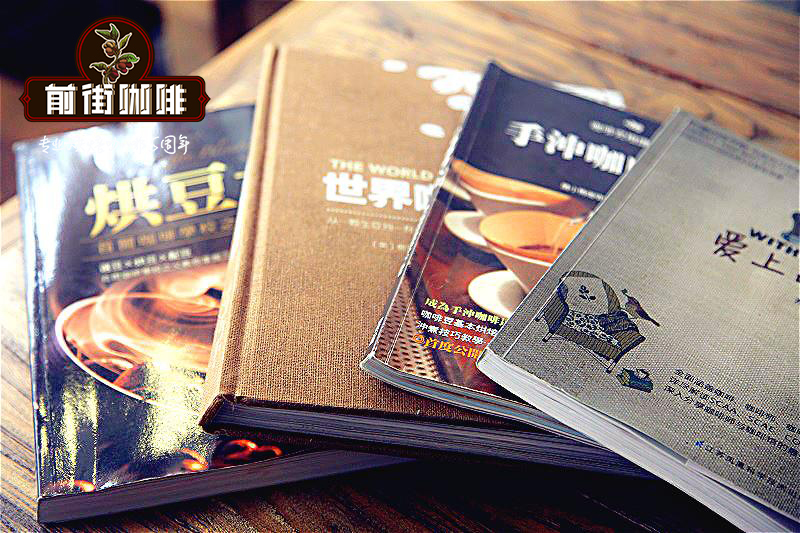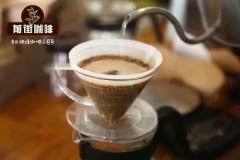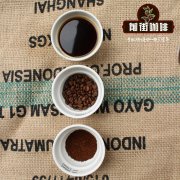How to improve or decrease the acidity of coffee?

Professional coffee knowledge exchange more coffee bean information please follow the coffee workshop (Wechat official account cafe_style)
Acidity has always been controversial in coffee.
Some people think that acidity is the feeling of sharpness, irritation, and stinky acid.
But some people think that good acidity is the representative of high-quality coffee.
It's true that sour coffee doesn't make people happy.
But bright, lively and rich in acidity, which may remind you of flavors such as fruits and sweet oranges
This kind of acid is highly acceptable to people who like coffee.
Whether it is to emphasize the natural, juice-like acidity of coffee
Or avoid the unpleasant sour taste of coffee, which can be done.
Use Behmor Connected to cook, source: Behmor
Understand the characteristics of coffee beans
You can emphasize the flavor characteristics of coffee beans, and it is important to know the characteristics of your coffee beans.
Is he a hard or soft bean?
Hard beans grow in a colder or higher altitude environment, while the harder the coffee beans are, the richer the fruit flavor and acidity are.
Treatment method
What kind of beans are you flushing? Washing? The sun? Or honey treatment?
Coffee seeds from the fruit into raw beans is the process of treatment, so the treatment has a great impact on the flavor of coffee. Well-treated sun and honey treatments usually have higher sweetness and alcohol thickness, while water washing often has a purer flavor, and water-washed beans are rich in acid.
Baking degree
Are coffee beans deep roasted, medium roasted or light roasted?
The deeper the beans are roasted, the more baked they taste, and usually the deeper the roasted beans are, the more bitter they are, while the lighter roasted coffee is more acidic.
(from left to right) sun-dried raw beans, honey-treated raw beans, washed raw beans and coffee cooked beans. Source: Ana Valencia for Behmor
Water is the main ingredient in coffee
94-98% of a cup of coffee is water, which means that the flavor of coffee is deeply affected by the water used for brewing.
Water quality is a wide range of issues that need to be discussed separately, but we can discuss it a little bit here.
Water is mainly divided into hard water and soft water. Hard water has a high content of minerals, especially calcium and magnesium.
Soft water, on the other hand, has a lower content of minerals.
Steve Cuevas, winner of the 2017 America Cup tester contest, said:
"at higher concentrations, some of the minerals will become acidic buffers, reducing the acidity of the coffee, and the coffee is still sour, but it won't be so obvious. Minerals also speed up the extraction of coffee, and if you brew it for more than two minutes, it will often extract bitterness. "
Thomas Chandler, a coffee baker, microbiologist and chemist, said:
"Carbonate is the key to acid buffers, and the more carbonates there are in the water, the less acidic the coffee will be.
But carbonate is not the only substance that acts as a buffer.
In addition, the premise that carbonates work is that there are no other substances or low levels of other substances in the water. "
On the contrary, if the soft water has a higher sodium content, it will extract more acid from the coffee.
However, this does not mean that soft water is always suitable for making coffee.
Chemist Christopher and coffee guru Maxwell from the University of Bath in the UK discovered that
If the water contains more calcium and magnesium (hard water), it will extract more flavor and contain more acid.
Maxwell, the 2015 world coffee master champion, showed that this type of water can be used as a buffer when brewing.
So what's the answer?
All of the above sounds professional and difficult for ordinary people to explore.
However, whether you are making coffee at home or in a coffee shop, you can use this water quality information to improve brewing.
If the coffee tastes dull and lifeless, it doesn't flush out the bright acidity expected from the bean, or it tastes sour.
But if you don't think it's the coffee beans or the brewing problem, try adjusting the water used for brewing.
Use filtered water and bottled water to experience the change of coffee flavor by adjusting the water.
Adjust the cooking parameters to control the acid quality
It has been said that water is the most important ingredient of coffee, but water still has to be combined with coffee to create flavor.
Stands for "how" the combination of water and coffee affects the taste of brewing.
The mixture of water and coffee is called extraction, and the flavor and aroma of coffee beans slowly spread into the water.
The amount of coffee powder, amount of water, brewing time, grinding thickness, water temperature will affect the amount of extracted substances.
This is not just about creating stronger or lighter coffee, because some of the flavor and aroma substances are extracted at different times.
At the beginning of cooking, the acid is extracted, followed by sweetness and balance, and finally bitterness.
This means that underextracted coffee will have a sour taste and over-extracted coffee will have a bitter taste.
The ideal extraction results are high sweetness, good sense of balance, alcohol thickness and appropriate strength of acid.
Grinding thickness and extraction
There is no general grinding thickness, but here are some basic principles that can help you flush better or reduce acid quality.
Rougher grinding reduces the extraction rate because the coffee powder has a smaller surface area (note that the extraction rate is different from the cooking time, which refers to the extraction of flavor and aroma substances, while the cooking time refers to the contact time between the water and the coffee powder).
This means that rougher grinding will bring out bright acidity, but brewing too long will cause the coffee to have a smelly sour taste.
If you want more acid, use rougher grinding. If you want less acid, you can grind it finer.
Of course, the grinding thickness is only one of many factors, and the ideal thickness will vary depending on the nature of the coffee.
For example, deep-roasted coffee is easier to dissolve and extract faster, so deep-roasted coffee is usually suitable for coarser grinding.
Effect of cooking time on acid quality
Another main factor affecting the extraction is the cooking time, the longer the cooking time, the more substances will be extracted.
You can use your favorite beans, good water, and proper grinding thickness to cook.
But it may ruin the cup of coffee because of the wrong brewing time.
Barista Hustle pointed out that the grinding thickness does not affect what substance is extracted.
The grinding thickness will only change the time point of the extracted substance.
If you take a long time to brew coarse ground coffee, the acidity in your coffee will still not be too high.
And if you brew it for a shorter time and grind it more carefully, the coffee may have a sour taste.
Therefore, if you want more or less acid, it is recommended to shorten or prolong the cooking time.
Adjust the water temperature to emphasize the acid quality
Water temperature is also an important factor affecting the extraction rate. Joe, founder and CEO of Behmor
He developed and manufactured intelligent brewers approved by the boutique Coffee Association and intelligent bean roasters.
The Behmor intelligent cooker controls the temperature at the difference of one degree Fahrenheit.
Ensure that users can accurately control the acidity, sweetness and other flavors of coffee.
The higher the temperature of the water, the faster the substance is extracted.
The lower the water temperature, the slower the aroma and flavor are extracted.
However, there are still many substances that will not be extracted at certain temperatures.
This is why cold coffee has the characteristics of high sweetness, smooth taste and low acidity.
In addition, keep in mind that all these results are surrounded by changes in grinding thickness, cooking time, and so on.
Joe prefers to use higher water temperature with shorter cooking time.
In order to brew out the acidity of the coffee, he uses a high temperature to bring out the acidity, which is in the range of 95-96 degrees.
Steve agrees with the adjustment of water quality.
He says some people may use lower temperature brewing to avoid releasing the bitterness of the coffee.
However, if you use suitable water (of course, other variables should also be properly controlled)
The boiling water temperature of 94 degrees will bring out more obvious acidity than 91 degrees.
Use Behmor intelligent cooker to brew. Source: Behmor
The biggest advantage of making our own coffee is that we can adjust ourselves according to our preferences.
Although there will be some difficulties in the skills and techniques of time control.
But by mastering these factors, you can recreate your favorite flavor during cooking.
Let's create a cooking formula today, try to cook with different water, and experiment with the results of different water temperatures.
Because even if it is a gap, it may affect whether the coffee is sweet, sour or good.
Important Notice :
前街咖啡 FrontStreet Coffee has moved to new addredd:
FrontStreet Coffee Address: 315,Donghua East Road,GuangZhou
Tel:020 38364473
- Prev

What information can the date of coffee baking tell you?
Professional coffee knowledge exchange more coffee bean information please follow the coffee workshop (Wechat official account cafe_style) some people say that the roasting date of coffee beans is everything, but want freshly roasted coffee, but do not know what is fresh? The definition of freshness and delicacy is based on the effect of roasting date on coffee. Baking date doesn't mean everything. There are a few things that must be clarified first.
- Next

Coffee fruit, coffee beans or seeds? what happens if you don't sell coffee beans and sell coffee fruits?
Professional coffee knowledge exchange more coffee bean information Please follow the coffee workshop (Wechat official account cafe_style) generally people will think that small farmers need to cooperate and collect the harvested fruit, processing, direct trade, so that they can be competitive and profitable in the coffee industry. As long as small farmers are not connected to certified cooperatives, cup testing laboratories, processing plants and entry
Related
- What is the standard process for the purpose of coffee cup testing? What is the difference between hand-brewed coffee and cup testing?
- How to use hand-brewed coffee paragon small golden balls? How does cold coffee lock in the aroma of coffee?
- Is American coffee black? What is the difference between American coffee and drip coffee?
- Unexpected! Well-known tea beverage brand Lele Tea will withdraw from the Zhengzhou market!
- Starbucks enters the fashion and beauty industry?! Netizen: Give me an ice American eye cream
- Why can American refills for free? The difference between Americano and American drip pot coffee
- Being chased out of the rain in front of Starbucks?! Store: Sheltering from rain under umbrellas poses a safety hazard
- The white moonlight has changed?! Lucky launches "Big Winter Pear American"
- Hand-brewed coffee three-stage method, high-sweet and universal brewing method to share! What does the high sweet water level of hand-brewed coffee mean?
- What is the difference between raw, refined and full espresso coffee? How to extract espresso and taste good?

